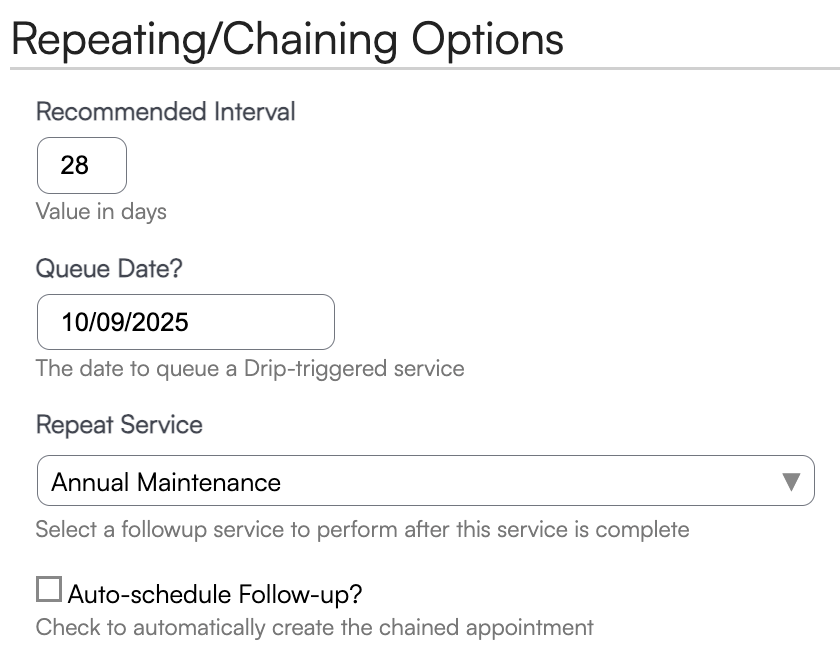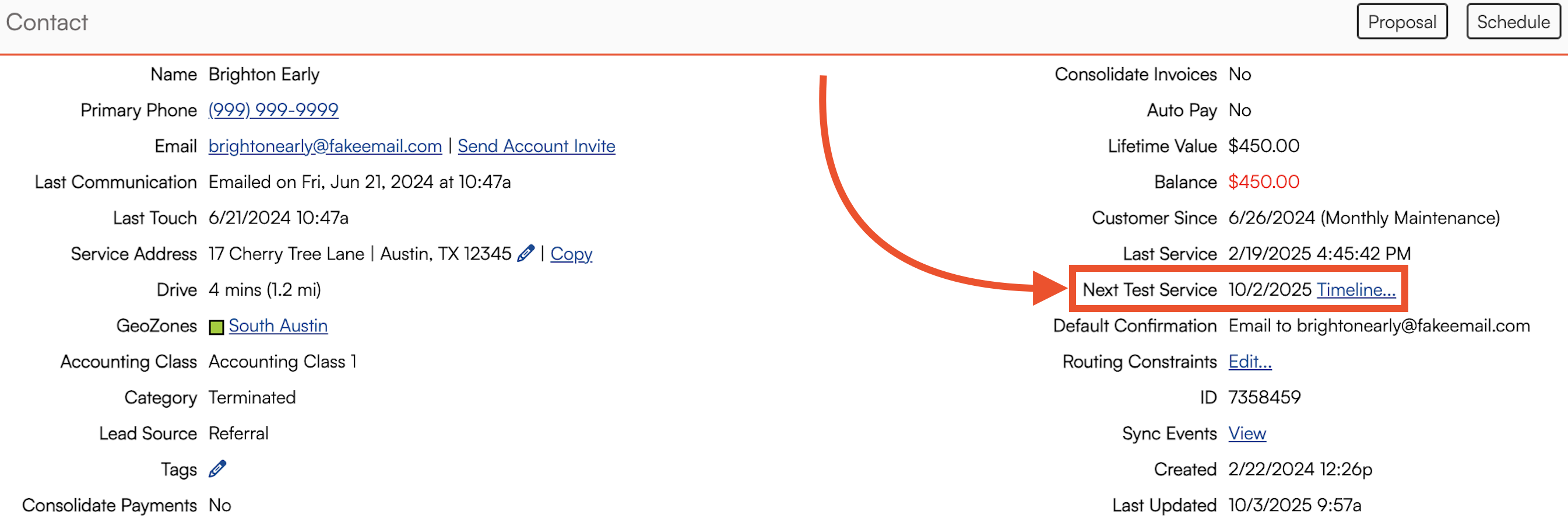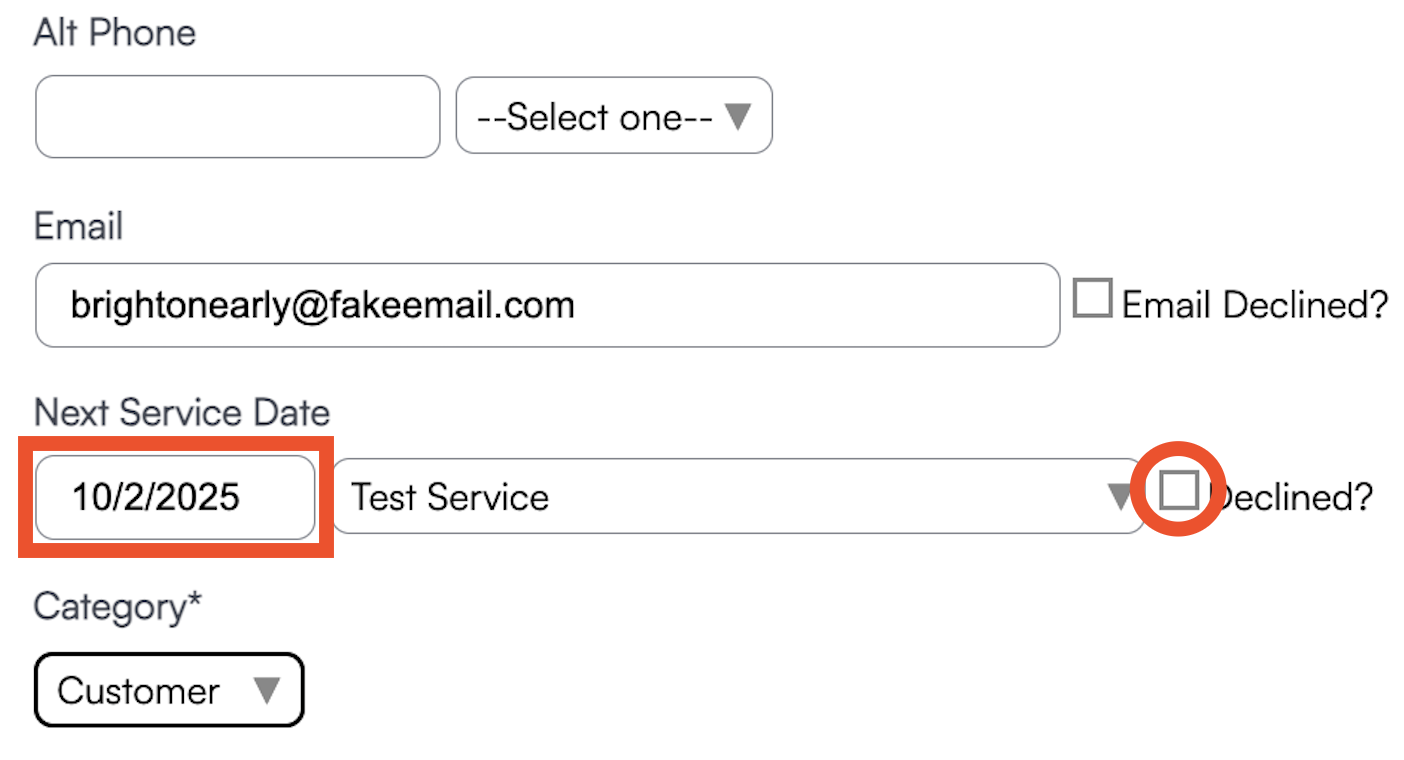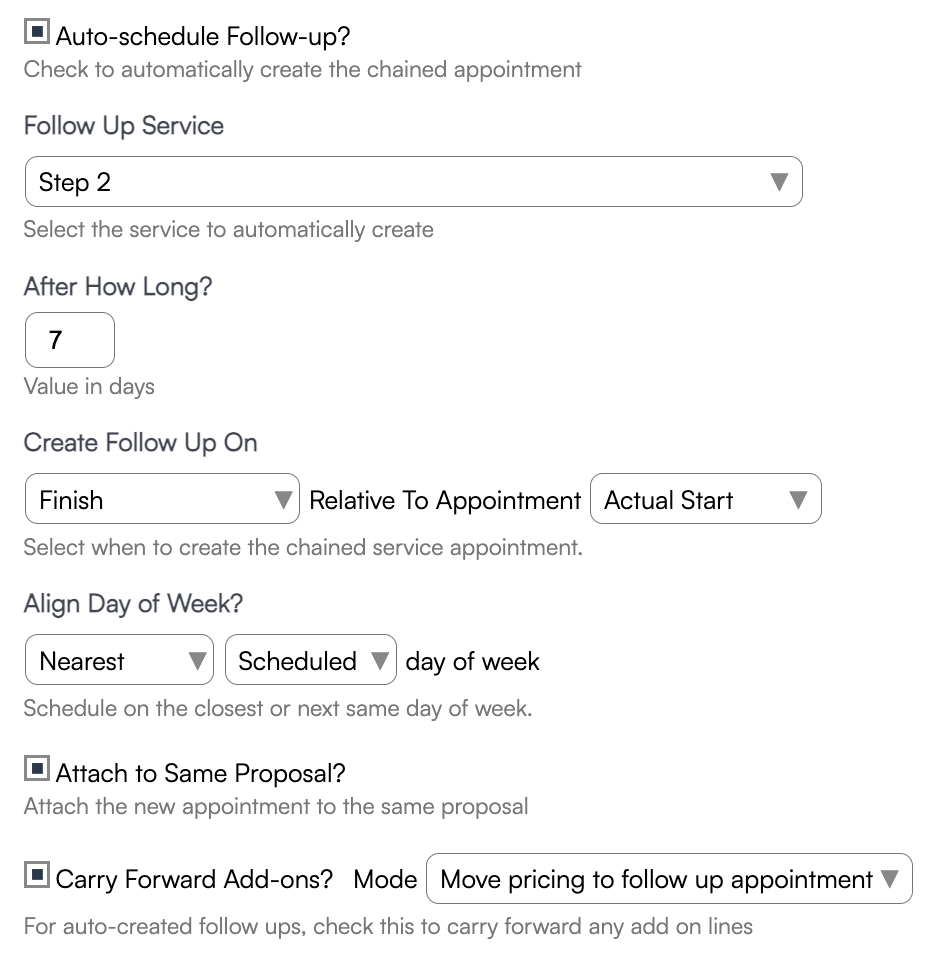Overview
This article explores the Repeating/Chaining Options section of the Services settings (Control Panel > Services > Edit or Add).
This article will review:

Recommended Interval
The Recommended Interval is the suggested number of days between appointments for a service. It is most often used for periodic services, such as routine maintenance, and helps set up service reminders and client tracking. This ensures clients are prompted to schedule their next appointment on time.
When a Recommended Interval is set, a Next Service Date is added to the contact’s profile. For example, if the interval is 7 days and the first appointment is scheduled for June 3, the Next Service Date will show June 10.
Expiring and Expired Services grids show up in Snapshots when a contact has a service that had a "recommended interval" set up on it.
- Expiring Services: A contact will display here when their Next Service Date is approaching.
- Expired Services: A contact will display here when their Next Services Date has passed.
This feature is most helpful for repeating services you don’t want to auto-schedule with Recurring Services, but still want reminders to place on the calendar.
You can check the Service Interval timeline by clicking on the blue Timeline link next to the Next Service date.

This will show any time that a recommended interval or other automated setting triggered that date to be entered onto the contact's profile. If the date was manually entered on the contact profile, it will not display on this timeline.

Don't want to see a contact on the Expiring or Expired service grid?
Go to their contact profile, click edit, and delete the Next Service Date (or Next Project) field or check the Declined box.

Queue Date
Queue Date is most useful for seasonal services. For example, you may have a drip trigger that sets an appointment with this service type to be scheduled for a customer every October to perform winterizing services. If a Queue date is entered when configuring a service, all appointments will be queued on that date. Your scheduling team can then distribute those queued appointments in the way that makes the most sense on the calendar.
Repeat Service
Repeat Service lets you specify an alternate service to follow the recommended service interval. This is useful when one service always leads into another. For example, once Service A is completed, a recommended service date will automatically be set for Service B.
Common use cases include:
- An Install service followed by an Annual Maintenance service after 365 days.
- Set-up / Take-down, Estimate / Service, or Demolition / Installation service combinations.
Auto-Schedule Follow Up
You can choose to automatically schedule a follow up service which will open up a new set of options. You will select which service you want to automatically create on the calendar as well as how many days later it should be created.
-
Create Follow Up On: This option affects when the follow up appointment is created, based on when an appointment is scheduled or finished with this service:
-
Schedule: When this appointment is scheduled, go ahead and schedule the follow up appointment
-
Finish: When this appointment is finished, then schedule the follow up appointment
-
Queue on Schedule: Create the follow up appointment in the Queue when this appointment is scheduled
-
Queue on Finish: Create the follow up appointment in the Queue when this appointment is finished
-
- Relative To Appointment: This controls what date the scheduled follow up appointment is created relative to:
- Actual Start: The follow up appointment will be created relative to the actual start date of this appointment
-
Actual Finish: The follow up appointment will be created relative to the actual finish date of this appointment
-
Scheduled Start: The follow up appointment will be created relative to the scheduled start of this appointment
- Align Day of Week: This option forces the newly created follow up appointment to "snap" to a particular day of the week. The first dropdown contains either Yes or No. If Yes is selected, then the available options are:
- Scheduled: The day of week from the Scheduled Start is used
-
Actual: The day of week from the Actual Start is used
-
Target: The day of week from the Target Date is used
- Carry Forward Options: This option determines what happens to any add-on lines when auto-creating follow-ups.
- Keep pricing on first appointment: This option will leave the pricing on the first appointment. The lines will be copied to the follow up appointment, but will all have a zero price.
-
Move pricing to next appointment: This option will duplicate the add ons to the follow up appointment including pricing, and then zero out the pricing on the first appointment.
-
Move lines to next appointment: This option will move the add ons and associated pricing to the follow up appointment. The first appointment will not have any add ons.
-
Copy pricing to next appointment: This option copies the add ons and the pricing to the follow up appointment. The pricing and add ons will stay on the first appointment also.